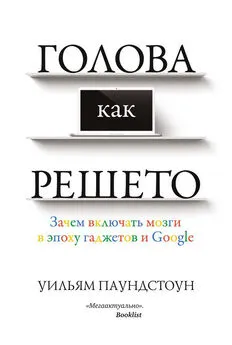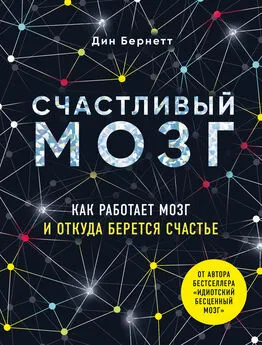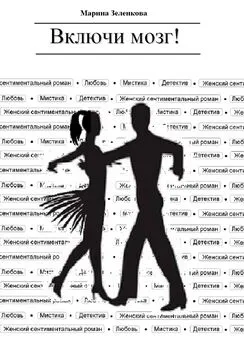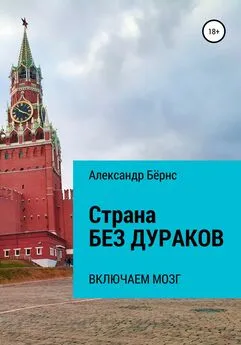Кэролайн Лиф - Включите свой мозг
- Название:Включите свой мозг
- Автор:
- Жанр:
- Издательство:неизвестно
- Год:неизвестен
- ISBN:нет данных
- Рейтинг:
- Избранное:Добавить в избранное
-
Отзывы:
-
Ваша оценка:
Кэролайн Лиф - Включите свой мозг краткое содержание
Включите свой мозг - читать онлайн бесплатно полную версию (весь текст целиком)
Интервал:
Закладка:
[4] 98 percent of mental and physical illnesses come from our thought life: www.stress.org/americas.htm; www.naturalwellnesscare.com/stress-statistics.html; Harvard Medical School’s Mind-Body Institute, www.massgeneral.org/bhi/research/; Church, Genie in Your Genes. The Institute of HeartMath discusses an experiment titled “Local and Nonlocal Effects of Coherent Heart Frequencies on Conformational Changes of DNA.” http://appreciativeinquiry.case.edu/practice/organizationDetail.cfm?coid=852§or=21. A study by the American Medical Association found that stress is a factor in 75 percent of all illnesses and diseases that people suffer from today. The association between stress and disease is a colossal 85 percent, Brian Luke Seaward, www.brianlukeseaward.net/articles/SuperStress-WELCOA-Seaward.pdf. “Cancer Statistics and Views of Causes,” Science News 115, no. 2 (January 13, 1979): 23; H. F. Nijhout “Metaphors and the Role of Genes and Development,” BioEssays 12 (1990): 444–46; W. C. Willett, “Balancing Lifestyle and Genomics Research for Disease Prevention,” Science 296 (2002): 695–98; C. B. Pert, Molecules of Emotion: Why You Feel the Way You Feel (New York: Simon and Schuster, 1997); B. Lipton, The Biology of Belief: Unleashing the Power of Consciousness, Matter and Miracles (Santa Cruz, CA: Mountain of Love Productions, 2008).
[5] C. M. Leaf, The Gift in You: Discover New Life through Gifts Hidden in Your Mind (Nashville: Thomas Nelson, 2009).
[6] Church, Genie in Your Genes.
[7] Herbert Benson MD, president of Harvard Medical School’s Mind-Body Institute, www.massgeneral.org/bhi/research.
[8] Glen Rein and Rollin McCraty, “Local and Nonlocal Effects of Coherent Heart Frequencies on Conformational Changes of DNA,” Proceedings of the Joint USPA/IAPR Psychotronics Conference, Milwaukee, Wisconsin, 1993, http://www.heartmath.org/templates/ihm/e-ewsletter/publication/2012/winter/emotions-can-change-your-dna.php; Rollin McCraty et al., “Modulation of DNA Conformation By Heart-focused Intention.” HeartMath Research Center, Institute of HeartMath, publications no. 03–08, Boulder Creek, CA, 2003.
[9] “Stress,” Your Dictionary, http://www.yourdictionary.com/stress. Emphasis mine.
[10] Sheldon Cohen et al., “Psychological Stress and Disease,” JAMA 14 (2007): 1685, http://www.bbc.com/future/story/20120619-how-stress-could-cause-illness; http://www.stress.org/stress-and-heart-disease/.
[11] Brian Luke Seaward, Managing Stress: Principles and Strategies for Health and Wellbeing (London: Jones and Bartlett Learning, 2006).
[12] “Cancer Statistics and Views of Causes,” Science News 115, no. 2 (January 13, 1979): 23.
[13] Lipton, The Biology of Belief.
[14] Nijhout, “Metaphors and the Role of Genes and Development.”
[15] Willett, “Balancing Lifestyle and Genomics Research for Disease Prevention.”
[16] “Stress and Heart Disease,” http://www.stress.org/stress-and-heart-disease/.
[17] Jeffery Rosen, “The Brain on the Stand,” New York Times, March 11, 2007, www.nytimes.com/2007/03/11/magazine/11Neurolaw.t.html.
[18] Francis Crick, quoted in John Tierney, “Do You Have Free Will? Yes, It’s the Only Choice,” New York Times, March 21, 2011, www.nytimes.com/2011/03/22/science/22tier.html?pagewanted=all&_r=0.
[19] Benjamin Libet, “Unconscious Cerebral Initiative and the Role of Conscious Will in Voluntary Action,” Behavioral and Brain Sciences 8 (1985): 529–66; John Dylan-Haynes et al., “Unconscious Determinants of Free Decisions in the Human Brain,” Nature Neuroscience 11 (2008): 543–45.
[20] Hagop Sarkissian et al., “Is Belief in Free Will a Cultural Universal?” Mind and Language 25 (2010): 346–58.
[21] Kathleen D. Vohs and Jonathan W. Schooler, “The Value of Believing in Free Will: Encouraging a Belief in Determinism Increases Cheating,” www.csom.umn.edu/assets/91974.pdf.
[22] Articles in Science and NewScientist have recently discussed x-phi work on free will from authors including Eddy Nahmias and Dylan Murray, “Experimental Philosophy on Free Will: An Error Theory for Incompatibilist Intuitions,” in New Waves in Philosophy of Action, ed. Jess Aguilar, Andrei Buckare», and Keith Frankish (Basingstoke, Hampshire, UK: Palgrave-Macmillan, 2011); and Eddy Nahmias, Stephen G. Morris, Thomas Nadelhoffer, and Jason Turner “Is Incompatibilism Intuitive?” Philosophy and Phenomenological Research 73, no. 1 (2006): 28–53.
[23] H. S. Mayberg, “Defining the Neural Circuitry of Depression: Toward a New Nosology with Therapeutic Implications,” Biological Psychiatry 61, no. 6 (March 2007): 729–30.
[24] Church, Genie in Your Genes; “Epigenetics: A Web Tour,” Science, www.sciencemag.org/feature/plus/sfg/resources/res_epigenetics.dtl.; Ethan Watters, “DNA Is Not Destiny: The New Science of Epigenetics Rewrites the Rules of Disease, Heredity, and Identity,” Discover, November 2006, http://discovermagazine.com/2006/nov/cover.
[25] Elizabeth Pennisi, “Behind the Scenes of Gene Expression,” Science 293, no. 553 (2001): 1064–67.
[26] Ibid.
[27] Ken Richardson, The Making of Intelligence (New York: Columbia University Press, 2000).
[28] Eric R. Kandel, James H. Schwartz, and Thomas M. Jessell, eds. Essentials of Neural Science and Behavior (New York: Appleton and Lange, 1995); Eric R. Kandel, “Molecular Biology of Memory: A Dialogue between Genes and Synapses,” http://www.nobelprize.org/mediaplayer/index.php?id=1447; Eric. R. Kandel, “A New Intellectual Framework for Psychiatry,” American Journal of Psychiatry 155, no. 4 (1998): 457–69.
[29] Ibid.
[30] Dorothy Nelkin, The DNA Mystique (New York: Norton, 1995), 15.
[31] Lipton, Biology of Belief. B. Lipton, K. G. Bensch, and M. A. Karasek, “Microvessel Endothelial Cell Transdifferentiation: Phenotypic Characterization,” Differentiation 46 (1991): 117–33.
[32] Gail Ironson et al., “An Increase in Religiousness/Spirituality Occurs after HIV Diagnosis and Predicts Slower Disease Progression over Four Years in People with HIV,” Journal of General Internal Medicine 21 (2006): 62–68.
[33] As quoted in Church, Genie in Your Genes, 65.
[34] Watters, “DNA Is Not Destiny.”
[35] John Cloud, “Why Your DNA Isn’t Your Destiny,” Time, www.time.com/time/magazine/article/0,9171,1952313-2,00.html.
[36] Robert Weinhold, “Epigenetics: The Science of Change,” Environmental Health Perspectives 114, no. 3 (March 2006).
[37] “Learning Without Learning,” The Economist, September 21, 2006, 89.
[38] www.cajal.csic.es/ingles/index.html.
[39] In part 2, I will explain how this can be done.
[40] Jeffrey M. Schwartz and Sharon Begley, The Mind and the Brain (New York: Harper Perennial, 2002); Jeffrey M. Schwartz and Rebecca Gladding, You Are Not Your Brain (New York: Avery, 2012).
[41] Caroline M. Leaf, “The Mind Mapping Approach: A Model and Framework for Geodesic Learning” (unpublished doctoral dissertation, University of Pretoria, Pretoria, South Africa, 1997); Caroline M. Leaf, Brenda Louw, and Isabel Uys, “The Development of a Model for Geodesic Learning: The Geodesic Information Processing Model,” The South African Journal of Communication Disorders 44 (1997): 53–70; Leaf, “The Move from Institution Based Rehabilitation (IBR) to Community Based Rehabilitation (CBR): A Paradigm Shift,” Therapy Africa 1, no. 1 (August 1997): 4; Leaf, “An Altered Perception of Learning: Geodesic Learning,” Therapy Africa 1, no. 2 (October 1997): 7.
[42] Doidge, Brain That Changes Itself.
[43] Barbara Arrowsmith and Norman Doidge, The Woman Who Changed Her Brain: And Other Inspiring Stories of Pioneering Brain Transformation (New York: Free Press, 2012).
[44] Caroline M. Leaf, The Switch On Your Brain 5-Step Learning Process (Dallas: Switch On Your Brain, 2008).
[45] Arrowsmith and Doidge, Woman Who Changed Her Brain; Church, Genie in Your Genes; Doidge, Brain That Changes Itself; Dispenza, Evolve Your Brain; Leaf, “Mind Mapping Approach”; Leaf, Switch On Your Brain 5-Step Learning Process; Caroline M. Leaf, Who Switched O! My Brain? Controlling Toxic Thoughts and Emotions (Dallas: Switch on Your Brain, 2007) and DVD series (Johannesburg, South Africa: Switch on Your Brain, 2007); C. M. Leaf, M. Copeland, and J. Maccaro, “Your Body His Temple: God’s Plan for Achieving Emotional Wholeness,” DVD series (Dallas: Life Outreach International, 2007).
[46] Joe Dispenza, Breaking the Habit of Being Yourself (New York: Hay House, 2012).
[47] Richard Wiseman, “Self Help: Forget Positive Thinking, Try Positive Action,” The Observer, June 30, 2012, http://www.guardian.co.uk/science/2012/jun/30/self-helppositive-thinking; Jim Taylor, “Is the Self-help Industry a Fraud?” April 18, 2011, http://blog.ctnews.com/taylor/2011/04/18/is-the-self-help-industry-a-fraud/#.UVedEdRXVA4.email; Michael Shermer, “SHAM Scam: The Self-Help and Actualization Movement Has Become an $8.5-Billion-a-Year Business. Does It Work?” April 23, 2006, http://www.scientificamerican.com/article.cfm?id=sham-scam.
[48] “The Problem with Self-Help Books: Study Shows the Negative Side to Positive Self-Statements,” e! Science News, July 2, 2009, http://esciencenews.com/articles/2009/07/02/the.problem.with.self.help.books.study.shows.negative.side.positive.self.statements.
[49] Schwartz and Begley, Mind and the Brain; Schwartz and Gladding, You Are Not Your Brain.
[50] Ellen Langer and Mihnea Moldoveanu, “The Construct of Mindfulness,” Journal of Social Issues 56, no. 1 (2000): 1–9; Leaf, Who Switched O! My Brain?; Leaf, The Gift in You.
[51] Caroline M. Leaf, Isabel C. Uys, and Brenda Louw, “An Alternative Non-Traditional Approach to Learning: The Metacognitive-Mapping Approach.” The South African Journal of Communication Disorders 45 (1998): 87–102.
[52] Sissa Medialab, “The Good Side of the Prion: A Molecule That Is Not Only Dangerous, but Can Help the Brain Grow,” Science Daily, February 14, 2013, www.sciencedaily.com/releases/2013/02/130214075437.htm?utm_source=feedburner&utm_medium=email&utm_campaign=Feed%3A+sciencedaily%2Fmind_brain+%28ScienceDaily%3A+Mind+%26+Brain+News%29.
[53] Loyola University Health System, “New Evidence for Link between Depression and Heart Disease,” Science Daily, February 18, 2013.
[54] “Brain Signs of Schizophrenia Found in Babies,” Science Daily, June 9, 2010, http://www.sciencedaily.com/releases/2010/06/100621111240.htm; “Alterations in Brain Activity in Children at Risk of Schizophrenia Predate Onset of Symptoms,” Science Daily, March 22, 2013, http://www.sciencedaily.com/releases/2013/03/130322174343.htm.
[55] Leaf, Who Switched O! My Brain?; Maria Konnikova, Mastermind: How to Think Like Sherlock Holmes (New York: Viking Penguin, 2013); Maria Konnikova, “The Power of Concentration,” New York Times Sunday Review, December 15, 2012, http://www.nytimes.com/2012/12/16/opinion/sunday/the-power-of-concentration.html?pagewanted=1&_r=2&ref=general&src=me&.
[56] Schwartz and Begley, Mind and the Brain; Schwartz and Gladding, You Are Not Your Brain; Dispenza, Evolve Your Brain; Dispenza, Breaking the Habit of Being Yourself; Allan Jones, www.ted.com/speakers/allan_jones.html.
[57] Richard J. Davidson et al., “Alterations in Brain and Immune Function Produced by Mindfulness Meditation,” Psychosomatic Medicine 65 (2003): 564–70.
[58] Marcus E. Raichle et al., “A Default Mode of Brain Function: A Brief History of an Evolving Idea” Neuroimage 37 (2007): 1083–90.
[59] Matthew R. Brier et al., “Loss of Intranetwork and Internetwork Resting State Functional Connections with Alzheimer’s Disease Progression,” Journal of Neuroscience 32, no. 26 (2012): 8890–99; Christian F. Beckmann et al., “Investigations into Resting-State Connectivity Using Independent Component Analysis,” Philos Trans R Soc Lond, B, Biol Sci 360 (2005):1001–13.
Читать дальшеИнтервал:
Закладка:





![Кэролайн Уилльямс - Мой продуктивный мозг [Как я проверила на себе лучшие методики саморазвития и что из этого вышло]](/books/1096012/kerolajn-uillyams-moj-produktivnyj-mozg-kak-ya-pro.webp)
![Рэй Брэдбери - Включите ночь! [Как включали ночь]](/books/1109948/rej-bredberi-vklyuchite-noch-kak-vklyuchali-noch.webp)


